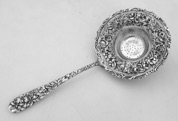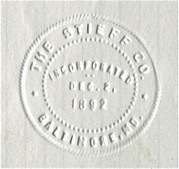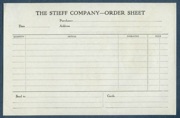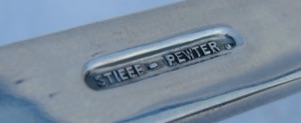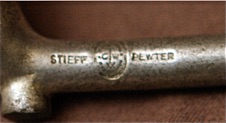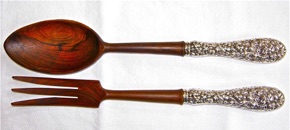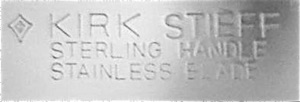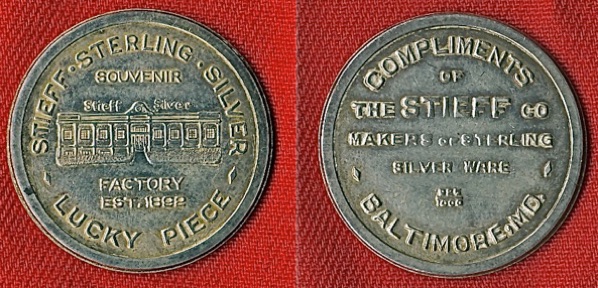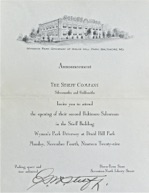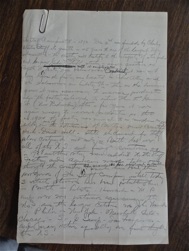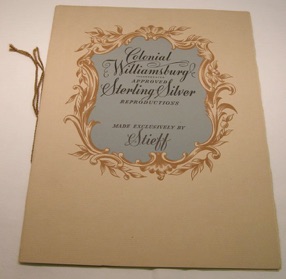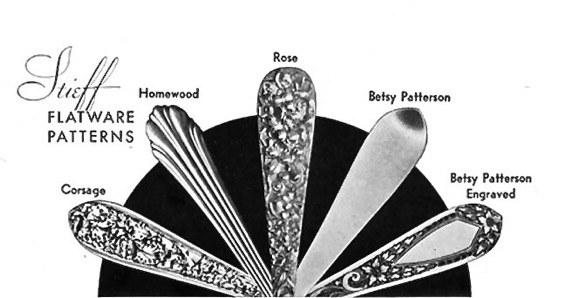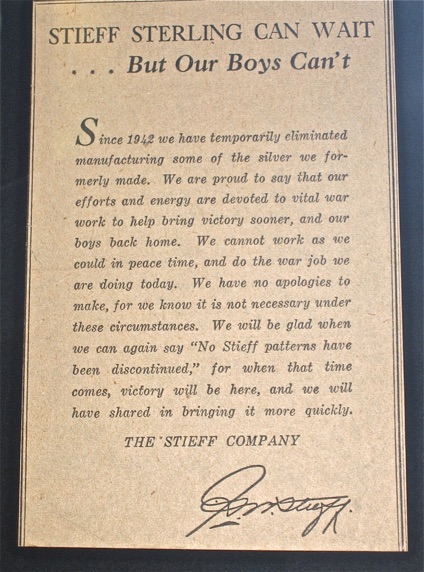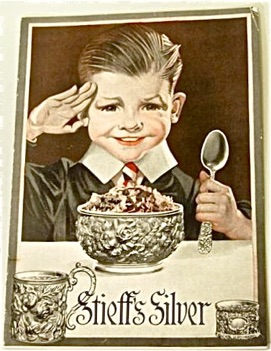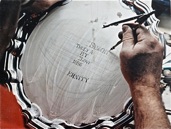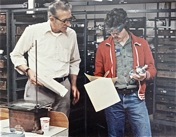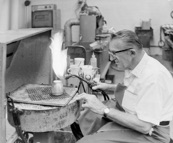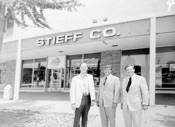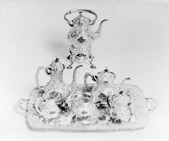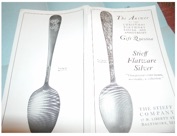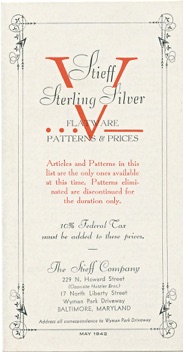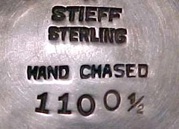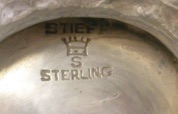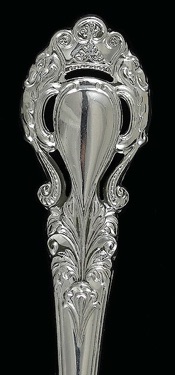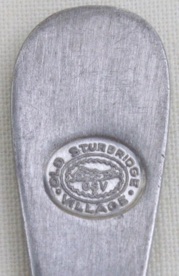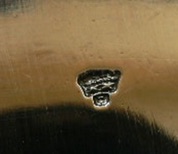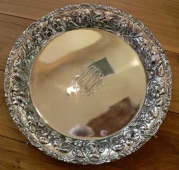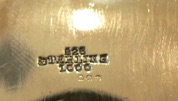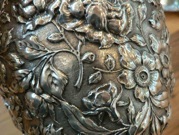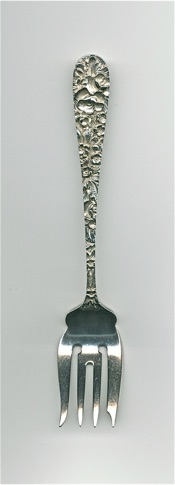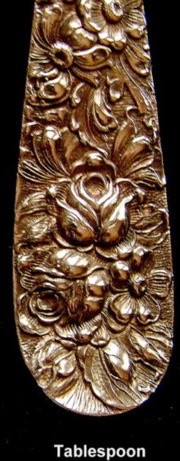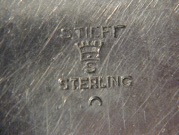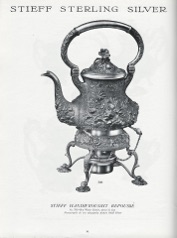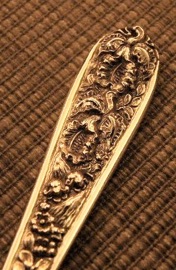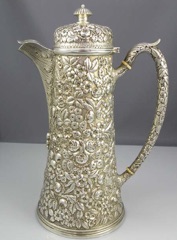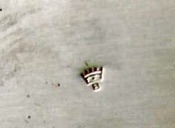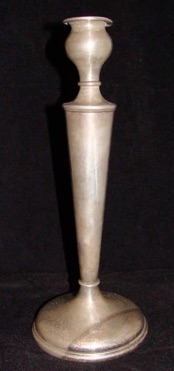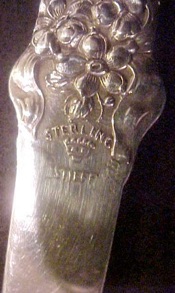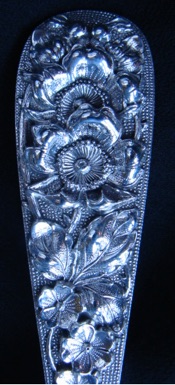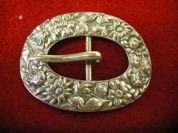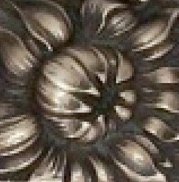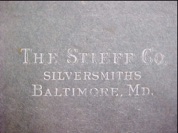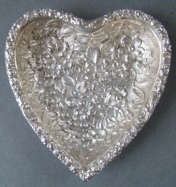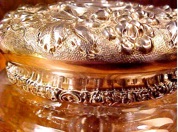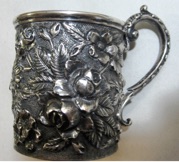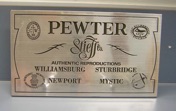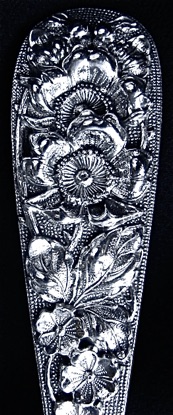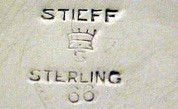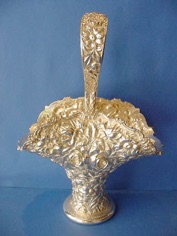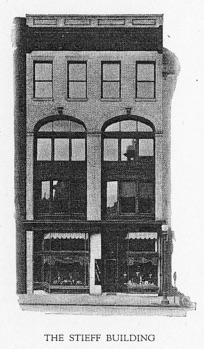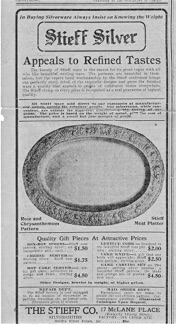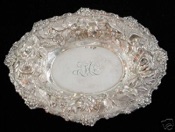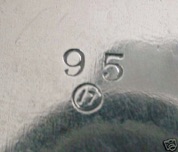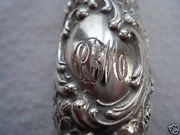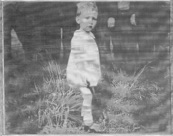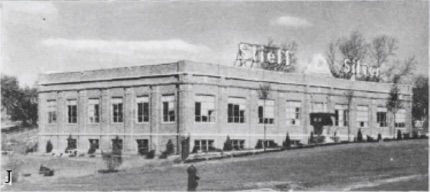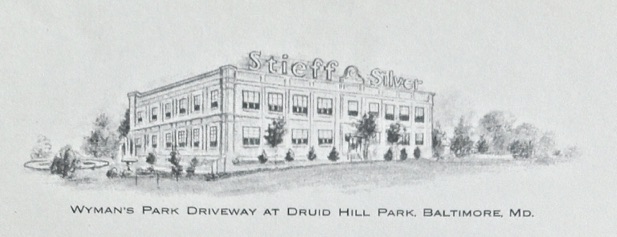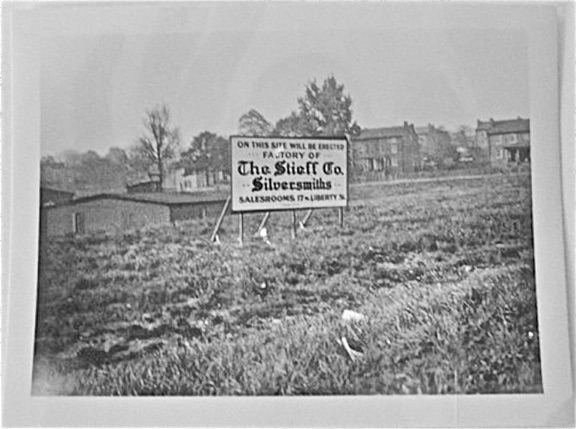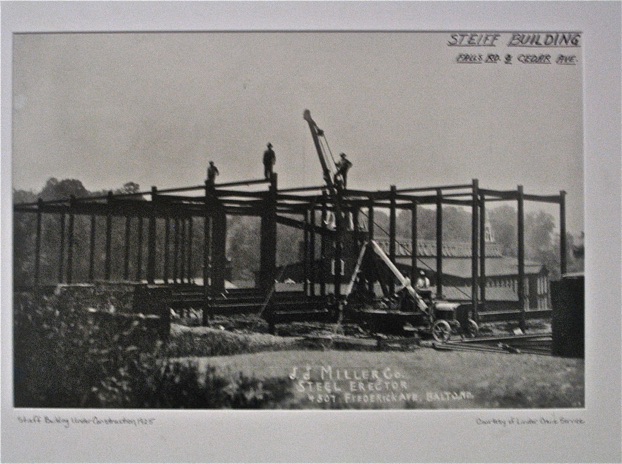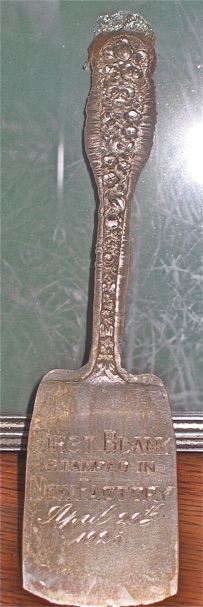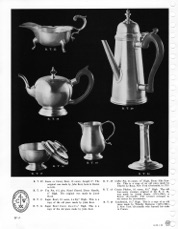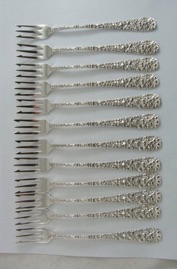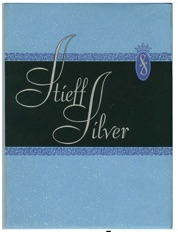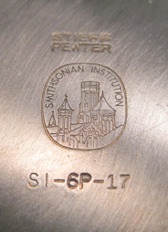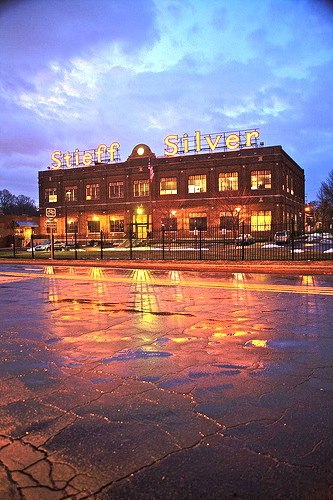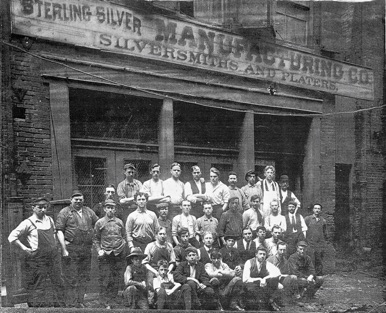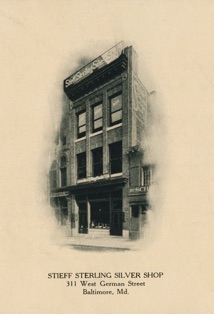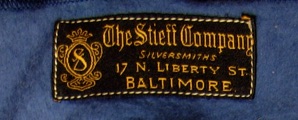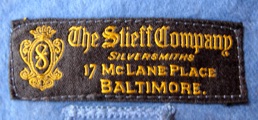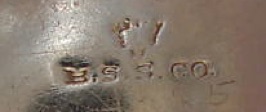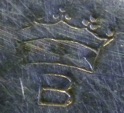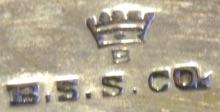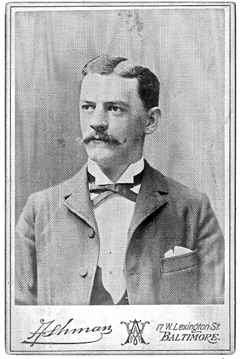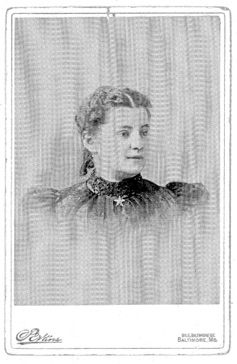A Post War Boom
In the 1950’s Stieff would make silver items for the Eisenhower administration to give as gifts to dignitaries. Sometimes the White House would send a helicopter over to The Stieff Company and land on the lawn of the factory to pick up items. Stieff also made flatware for use in the White House, some with the presidential seal on them. Mamie Eisenhower toured the factory and picked out silver items. When Charles C. Stieff III was born in 1955, the first lady sent a personal hand written note to the new baby, which he still has today, proudly displayed in his home.
A Stieff salesmen showing off the wares in the Belvedere Ave. Store (December 1950)
Tastes change, as does fashion and the way we entertain. In the prosperity after the second world war there was a brief, second golden age of silver. Brides who had received their mothers silver expanded the sets or decided on one of the new “modern” patterns brought out by Stieff. As more women entered the workforce less time was allotted for “teas” or formal entertaining. In the 1960’s silver sales started sinking fast. Casual dining and stainless steel flatware gained popularity and acceptance. A Silver Service was quickly becoming something that “your mother” owned.
In 1950, Pewter would enter into the house of Stieff. Stieff started making items for Colonial Williamsburg as well as for it’s own retail stores, as well as retail for stores around the country. In 2011, speaking of the success of his family, Rodney Stieff told me “Silver was a very good business, but it was pewter that made us what we are today” Over time, pewter would become the main business of The Stieff Company.
In 1967, The Stieff Company bought “The Schofield Company” This added more volume to the silver business and brought in highly skilled silversmiths with decades of experience. In 1977 as the old Schofield dies were wearing out, all of the Schofield patterns would be discontinued. Rodney Stieff in 2011 told me “the best business decision I ever made was to buy Schofield” The purchase of Schofield also brought the manufacture of the “Woodlawn Vase” racing trophy over to Stieff.
click below to read about
The Schofield Company
PEWTER
Pewter was introduced at Stieff in the 1950s and becoming more important to the company.By the early 1970’s pewter had become 60% of the companies sales. A 1971 expansion doubled the size of the Wyman Park Drive factory, primarily for expansion of the pewter operations. This expansion would help Stieff absorb S. Kirk & Son in 1980.
In 1976, Stieff would acquire “Colonial Craftsmen” of Cape May NJ. Colonial Craftsmen was a maker of Pewter Dollhouse Miniatures” More about them in the pewter section.
Troubled Times in the Silver Business
In the late 1970’s the Hunt brothers of Texas tried to corner the silver market. Prices fluctuated wildly making the silver business unstable and unprofitable. When silver could be 50 dollars an ounce one month and 11 dollars an ounce the next month, it became impossible to predict manufacturing cost or price accurately. At both manufactures and retail stores it became an impossible job to deliver goods at the price promised. The manipulation of the silver market eventually bankrupted the Hunt brothers and resulted in a 10 million dollar fine from the government.
When silver prices were sky high at 50 dollars an ounce, a lot of old silver was sold to the scrappers to be melted down. We lost a lot of historic silver during those dark days.
(and again in 2011 at the peak of silver prices again reaching 50 dollars an ounce)
(Teak Salad Set from my collection)
S. Kirk & Son
A major competitor, S. Kirk and Son was purchased in 1979. Kirk had tried to diversify over the years as silver sales waned. With limited success at diversifying, the company agreed to be purchased by Stieff with the understanding that the Kirk patterns would be continued. Many of the old Stieff patterns were discontinued in December of 1979 to make room for the Kirk patterns. The antiquated Kirk factory at 2225 Kirk Avenue in Baltimore was closed and all operations were moved to the Wyman Park Drive location of The Stieff Company. Additionally the Kirk Pewter factory in Salisbury MD was shuttered and move to Stieff also. As it had been with the purchase of Schofield, the goal was added sales volume which would lower silver costs and the addition of skilled craftsmen at The Stieff Company.
The name was changed to The Kirk-Stieff Company reflecting the 1815 start date for Kirk against the later 1892 date for The Stieff Company.
Kirk management would be blended with Stieff management, and many of the Kirk silversmiths and factory workers came over to the Stieff factory. The STIEFF SILVER sign on the building was unchanged and still glows in the Baltimore night.
Kirk had been a larger company with a larger national market share. This extra presence in the market place would be good for Kirk-Stieff ten years later when Kirk-Stieff Company would be purchased by Brown-Forman (LENOX) and integrated with parts of the silver business owned by the company including Gorham.
In 1984 KIRK STIEFF took on a new logo. The Argent logo was adapted from an ancient symbol used by alchemists for silver or as it was known then Argentum.
From this symbol, the new logo was derived.
It was short lived as Lenox would replace the mark in the early 1990’s
The KIRK STIEFF name would appear only on new patterns introduced after 1979
Earlier patterns would keep either the Stieff name or the Kirk name which was on the backs of handles. The exception being knife blades , which were shared between the two brands and would carry the Kirk-Stieff name, as shown below.


